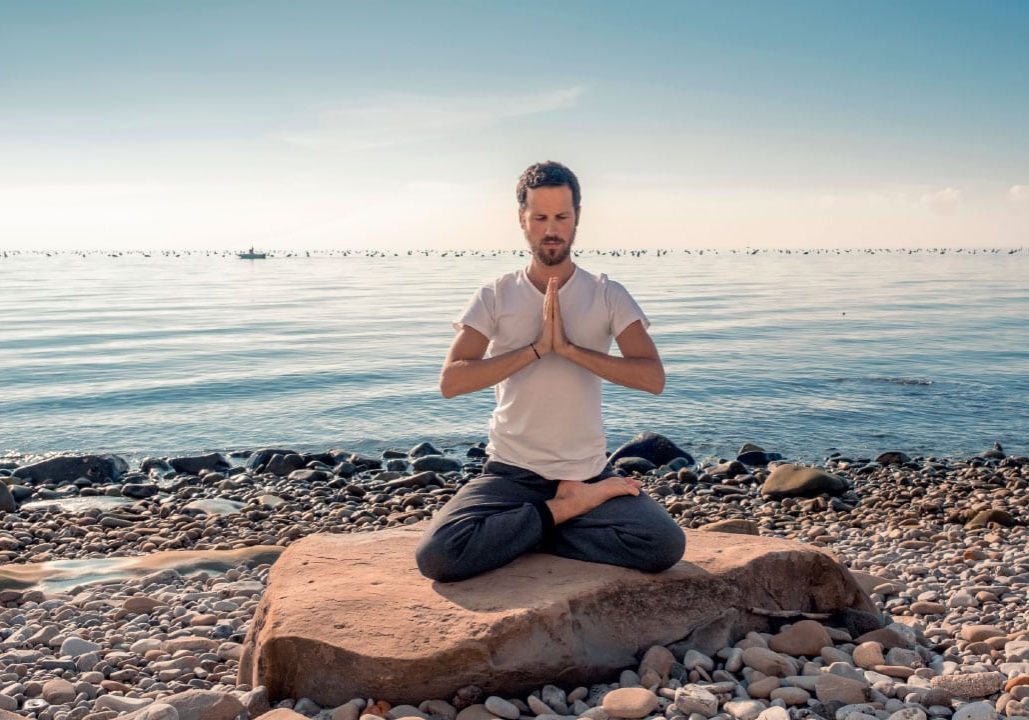
Prana, The Breath Life
Exploring the nuances of pranayama- By Anandmurti Gurumaa
Reading time: 5 minutes
Pranayama is not merely a breathing exercise. Yes, there are breathing practices referred to as types of pranayama, but there is much more to it than simply moving the breath in and out.
‘Prana’ and ‘ayama’ together make the word ‘pranayama’. ‘Prana’ is the cosmic life force that breathes life into all living beings. And ‘ayama’ means to give direction. Thus, providing direction to the vital life force that is pranayama.
What is prana?
The life force that plays a crucial role in the manifestation of this entire universe, our sages called this cosmic energy, prana. In their deep, meditative states, they understood that this vital force is a critical factor in the appearance and maintenance of not only all sentient beings but also all inanimate objects. The science of pranayama was based on this fundamental principle and involves the augmentation of this prana energy.
Prana operates on many levels. It is the essential life force and the prime form of all energy, working on the mind and body. Indeed, the entire universe is a manifestation of prana, the original creative power. Even kundalini shakti develops from awakened prana. With regard to our physical body, prana is a modification of the air element, primarily the oxygen we breathe that allows us to live.
What is pranayama?
Pranayama means giving direction to this life force, or prana. The most profound meaning, however, is given by the sage, Patanjali. Breath coming in, breath going out – this is normal breathing. But when breath comes in, breath goes out, and then breathing gets naturally suspended – the sage defines this spontaneous cessation of breath as pranayama. And this is the goal for spiritual seekers on the path of Raja yoga.
Benefits of pranayama practices in daily life
Although the deepest definition of pranayama is relevant only to a spiritual practitioner, there are breath-related practices that are very beneficial to worldly folk, which are also called pranayama. Breathing correctly improves the functioning of your body and mind. At the level of the body, it increases the oxygen supply to all organs, which is especially important for the optimal functioning of your brain as the neurons have a high metabolic rate. A shortage often results in a lack of mental equilibrium, focus and emotional control. Less oxygen also affects other bodily systems adversely. Thus, the regular practice of pranayama is essential for maintaining a balanced metabolism and, in turn, a healthy body.
It also helps in calming and stabilising the mind. This improves the mind’s concentration power and the ability to respond and not impulsively react to situations.
Breathing wrongly
Most people don’t know how to breathe correctly. Their breathing is shallow, uneven and unsynchronised. Our normal breathing should be such that we take around 15 to 16 breaths per minute. But that is seldom the case, though. It has been observed that the average respiration rate is between 25 to 30 breaths per minute. And this high breath rate becomes even higher when a person is anxious, upset, worried, or angry. A depressed person often tends to hold his or her breath inadvertently and gasps for air every now and then. If incorrect breathing continues for an extended period, detrimental effects appear both in the body and mind.
The deep relationship between the breath and the mind
As the breath moves, so does the mind. As the breath stops, so does the mind. See for yourself. Note how fast and shallow your breathing becomes when angry, agitated, or anxious. On the other hand, when you sit in breath awareness, as the breathing slows down, so does the mind.
Breathe correctly
Be aware of your breath. That’s the easiest way of harmonising your breath. When you are aware of your breathing, you will notice that the breath automatically becomes deep and long. Normal breathing should be regular and deep, so your breath rate averages around 15 to 16 breaths per minute.
Supplement breath awareness with the regular practice of pranayama. There are many types, all worthy of exploration, but here we will keep things simple. If nothing else, just sit quietly with an erect spine and breathe deeply. Take a long, smooth, deep inhalation and exhale similarly. You will notice that even if your mind is agitated, it starts calming down with deep breathing.
Finally, if one wishes to have a disease[1]free body and composed mind, the magic mantra is to lead a disciplined life. Eat with discretion, commit to the regular practice of asanas and pranayama and, most importantly, breathe correctly at all times.
Living in awareness and diligent training helps us gain a healthy body-mind equilibrium. This, in turn, will help you on your spiritual journey and improve your worldly life's quality.




